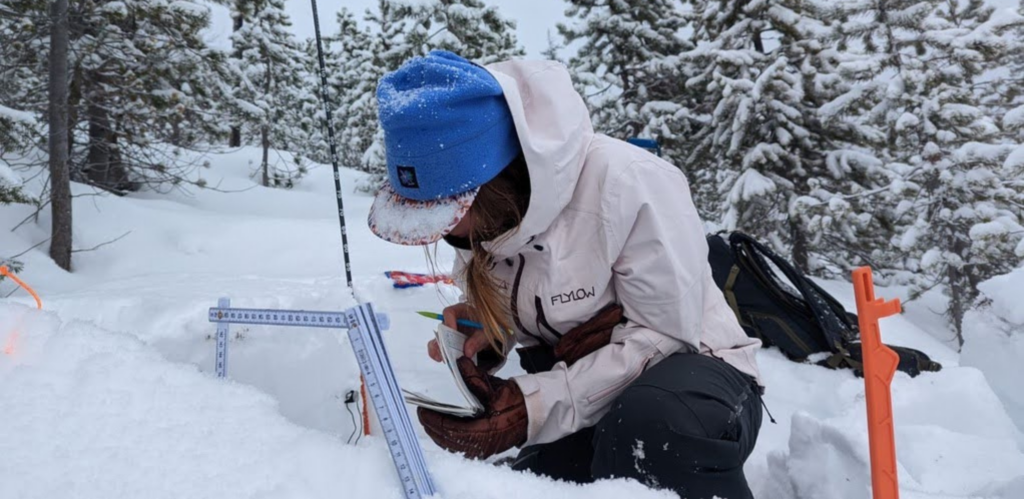
We are excited to share that Katie Matthews, one of our avalanche instructors, will conduct her Montana State University research through the West Central Montana Avalanche Center (WCMAC) this season. Born in Alaska and raised in Montana, Katie has dedicated herself to building a career within various outdoor industries. She is known for her passion for snow science and enjoys learning, talking, reading, and listening to all things avalanche-related. This marks her second season as an avalanche educator and her eighth season navigating the backcountry on skis.
Q: What is the focus of your research?
As an aspiring avalanche forecaster, I am curious about the inner workings of avalanche centers. They are tasked with observing, recording, and synthesizing complex information to produce a detailed and accurate avalanche forecast for the public. Forecasting relies on a constantly evolving and, at times, imperfect science, so how do forecasters evaluate the accuracy and effectiveness of their forecasts?
Unlike other USFS avalanche centers in the region, the WCMAC is a forecasting program provided by the Missoula-based nonprofit West Central Montana Avalanche Foundation. It produces avalanche forecasts four days a week and covers three large regions: The Bitterroot National Forest (Bitterroot Zone), Nez-Perce-Clearwater National Forest (Seeley Lake Zone), and Lolo National Forest (Rattlesnake Zone).
Avalanche forecasts provide detailed information on mountain weather conditions, avalanche problems, and travel advice concerning terrain and risk management. The forecast is generated by three forecasters conducting fieldwork, sorting through public and professional observations, analyzing data collected from weather stations and weather models, observing avalanche activity, and assessing and evaluating snowpacks across the different zones. The forecasts are accessible to the public through the website missoulaavalanche.org, subscriber emails, and social media.
The backcountry community has experienced significant growth in user volume and participation in recreational avalanche courses. With this surge, educating the public on understanding and utilizing avalanche forecasts becomes a crucial risk-management tool. Furthermore, encouraging the public to be proactive and responsible observers in the field contributes valuable data for each forecast area. Given the expansive coverage of the three forecast zones in West Central Montana, forecasters face the challenge of generating forecasts that encapsulate ever-changing complexities and offer detailed information on the snowpack and avalanche conditions.
For me, it raised the question, how do avalanche forecasters know if their forecasts align with conditions observed in the field?
My research aims to analyze and compare public observations with avalanche forecasts from the 2023-2024 winter season from the Missoulaavalanche.org database. This involves conducting interviews with public and professional community members and establishing objective and measurable standards to assess the accuracy of forecasts. The outcome of this research will aid the avalanche center in producing high-quality forecasts for the backcountry community while enhancing the retrospective analysis for forecasters.
Katie invites your participation in her local study, emphasizing that involvement is optional and anonymous. If you wish to contribute, please complete the Google Form survey: Click HERE
For further inquiries about her graduate research, contact Katie Matthews at [email protected]. Thank you!













